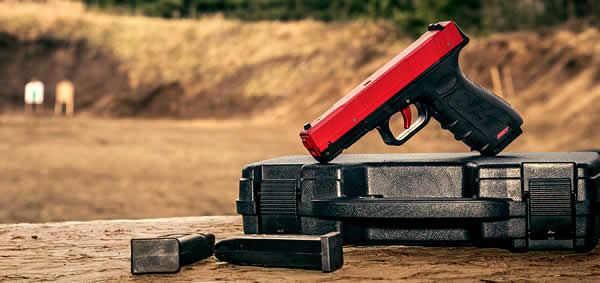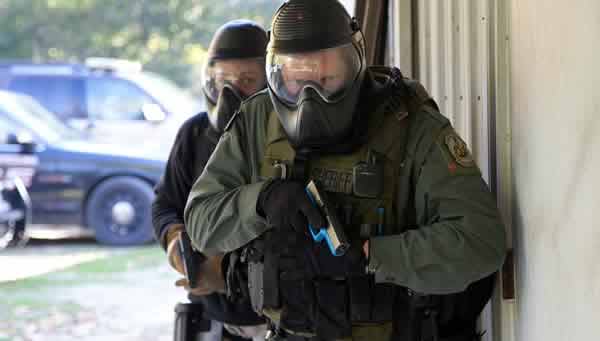
Is Martial Arts Training Unrealistic?
It is the question that has been asked many times in the self protection world. Whether you’re a survivalist, Joe DT, MMA wannabe or into Krav Maga. Sometimes you have to wonder, will this training help you survive in the real world, or is it just unrealistic training that you got yourself into?
Even Doug Marcaida Kali expert says, “that his Kali training is unrealistic”. That “none of this is real” and that there is a damn good reason for it. Filipino Martial Arts, like all martial arts, is plagued by criticism of its training principles. That movements are staged, rehearsed, practiced over and over again, drilled, memorized—until it becomes routine, until it becomes natural, until it becomes instinctive. Sound familiar? If you’re into firearms training, it should sound familiar.
Training is a progressive and fluid, never-ending lifestyle that first takes into the account the safety of the practitioner. When teaching someone how to use firearms it is advisable to take baby steps. To learn the safety rules. The mechanics of the firearm. Perhaps they start with a smaller calibre and progress and explore their preference. Paper and steel targets certainly do not shoot back. But the skills extracted through compartmentalized training (like how a boxer uses a skipping rope to work on stamina and coordination) are invaluable steps needed in order to progress the nature of said training.
Keyboard warriors aside, those who train understand that the value of compartmentalized training is absolutely essential to the bigger picture. Yet, we still read comments like “Paper Targets Don’t Shoot Back”—of course they don’t. In the same token we hear things like well he’s not attacking you realistically with that knife. Of course not. It’s a knife. Even dulled training knives hurt.
The point Doug Marcaida makes in this video is that like ALL training of ANY combative sport, any martial art, any sport PERIOD needs to first develop a solid understanding and mastery of the fundamentals before progressing into advanced. That the skills developed in training are valuable tools in order to appreciate and fully understand the nature of high speed, realistic and aggressive training. In the same way that a gun owner shoots paper targets to develop their skills and not simply tossed into an active shooter situation to “train.” So the next time someone tells you that Kali or Filipino Martial Arts training is unrealistic, simply smile and say “Yes. Yes it is.” —-you’ll smile knowing the reason its unrealistic is that it HAS TO BE.
Video Transcription:
Doug Marcaida: “Um it’s definitely exploring the different feeds that he can do can do– one feed, multiple attacks. So in this particular case Ishaan feeds one attack, Chris will do multiples and he’ll find his answers in this pod system (?)
“Now Ishaan will go feed, and feed twice. He’ll feeds once, and Chris will have to deal with that, Now ishaan will have to feed three times– one… and two… and three, in fluid motion. Ok? So, Chris and I-
Funker Tactical: “So, How much of this is prepared in your mind, and how much of it is happening on the spot?”
Chris: “So What’s prepared in my mind is, the, the angle–”
FT: “You have the same patterns all the time that you do for a low line or a high line, or…?”
Chris: “I have the same initial answer, and either I’m on the inside–, or I’m on the outside. From there, what I follow up with is based on where my hand lies, or how I feel. If my hand falls this way, I find I come back at any angle on the clock system that I see best.
FT: “There’s improvisation–”
Chris: “There’s some improvisation. There’s some improvisation but most of it, is calculated. If I go to stay up on this side– I’m on the inside, I go to the outside– cut through, exit on eleven. If I’m on the inside, say I was on the inside here, knife tap, oh he moved– I open up, exit on the one. Boom. Cut. Open up again on one. Jab him here, stab again on five. Open up, give me a nose strike– oop! Cut. Top, underneath, inside jam, pass on the outside.”
FT: “These guys are– I mean these guys have been doing it for a while, I imagine if this is something new to you, that’s a– a great place to explore and– you know, improvise and find new things!”
Doug: “You learn the basics first. So once again, it’s like learning a numbering system, right, you learn how to count from one to ten, then on one to one hundred, then you start mixing up different numbers, same thing as this. So, in this particular game, uh, Ishaan is doing a question and answer. I’ll transfer over, right? So. I’m asking Chris, ‘Ok Chris, if I deliver one question, answer, what happens if I give you this question in here?’ Bam. He gives me his answer. ‘Ok, but what if the question lies here?’ and then there’s another follow-up question to this, and Chris’ answer to that. In this question you hit this other thing over here, and he just answers, he thinks about it, he thinks about the angle, then he finishes the answer. Bam. So here’s my question, follow up with a different question, and this is another question. He gives me different answers. So this is like a question/answer, but we’re not trying to argue.”
FT: “I got it!”
Doug: “And it’s a difference, right?”
FT: “It’s a conversation!”
Doug: “It’s a conversation, because I’m trying to learn, I’m asking ‘Well, what if there’s this entry into that entry into this entry?’ Then Chris will think about it, ‘well if there’s here, into this into that’, then he’ll direct it this way. So there’s no right or wrong, there’s only exploration, that’s what we’re always talking about. If I’m in this particular grip, Chris I come in here you do that, ok now watch. When I come in here, I hook, and I cut you this way. So Chris comes up here and I’ll hook and I’ll cut you this way– then he’s got to come up with an answer going that way. Is it right or wrong? There’s no right or wrong. It’s whoever does what they do best, first, and better than the other person.”
FT: “So you guys have had many conversations?”
Doug: “A lot of conversations.”
Chris: “A LOT of conversations!”
FT: “So can we see an example of a non-verbal conversation? Like, what level are you guys at right now?”
-‘Conversation’ ensues-
FT: “Ah… Okay…”
Doug: “So my questions to him were here and here and here, and what you would do. I’m not trying to hurt him. I want to bring out things from him. And in the final things he wants to finish, this takes care of that. So the nonverbal thing is, I find a way where I grab, and he just automatically goes in there and destroys me. See, because there’s no resistance given to that. And the whole point here is that, ‘is it real?’, Guys, none of this is real. This is training! This is enjoying the art form. Once again, there are three facets of it, ‘Martial Art’ encompasses everything, within that martial art to make it realistic you want to have a reality base training within that martial art. But you also have to have a self-defense, which is ‘ok, here’s a stimulus of this attack’, his self-defense is how to deal with it this way. Boom. If I wanna be realistic later, I start pushing him and hitting him, hitting him, hitting him, and then he attacks and everything, that’s more realism, we’re trying to amp up with a lot of adrenaline and stress and everything else. Screaming and everything else. But then, again, we talk about the art form. In the end after we deliver the strikes in here, we do this–”
-Handshake between Doug and Chris-
Doug: “We’re friends, we’re buddies, everybody walks away. Integrity, Honor, enjoying what they did. And that’s a whole martial art that encompasses all these different facets of training.”
FT: “And that’s important for you, to not just be like– Because you know, in firearms training, in certain different martial arts, it’s all about “Everything used to be reality-based, train how you fight, fight how you train.”
Doug: “Uh, if it’s reality-based in firearms, and how is it that you’re shooting at a paper target, the paper target’s not shooting back? Where’s the reality in that?”
FT: “Y-and you know, there are still people who comment on videos that say ‘paper targets don’t shoot back’.”
Doug: “Well, of course, because it’s about safety. But do you ever question a bullet that ever hits somebody when they’re not prepared for it, they never saw it coming, right– or even if they are prepared for it? That’s what the paper target there’s for, that you express yourself perfectly. And if you hit that perfect target that even doesn’t shoot back, but if you train to do that later on, then you’ve accomplished something! You can hit something like a marksman? But same thing with weapons, it’s the same training. I’m not out here to book crazed people (?) I’m out here to go up with the way of the blade, the way of the weapons of Kali that we enjoy, nothing more than that. When we train in military, different story. The military doesn’t need to have all these other things of Integrity and Honor and they have a mission to accomplish. So we weed out all the other stuff. When you work with Law Enforcement it’s to protect and serve, it’s no kill in there (sic). When it comes to security programs, once again same thing: Safety and security. It’s to make sure the persons that they’re accosting, or they have to reprimand, has to be safe for them too. And then you have the civilian populace, where you can’t use a spear as a practice of the arts, so if you are faced with these things, you know what to do. But the number one thing is, never get into the situation to begin with, through awareness and everything else. Learn the disease so you can cure it.”
Transcription prepared by Sam Morstan
Source: Doug Marcaida Youtube, FunkerTactical



